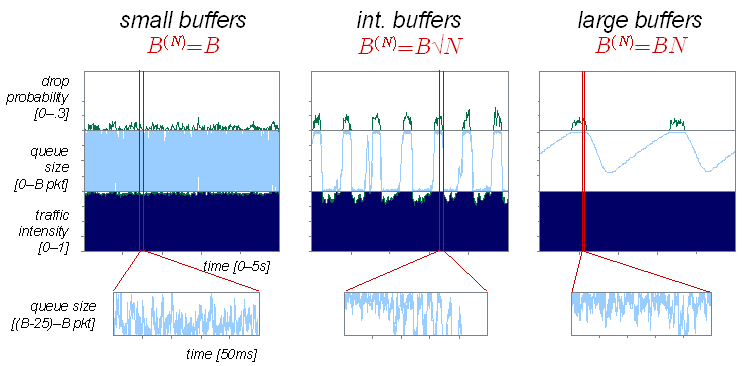I will describe the natural limiting regime which permits us to obtain limit theorems for TCP, and show how the stochastic and fluid parts of the limit mesh together. In fact, there are three different ways they can mesh together, depending on how big the buffer is -- by changing the buffer size we obtain different features of the TCP models of Baccelli, Kelly, and Srikant. I will also describe the sorts of traffic descriptors which are appropriate for capturing the burstiness of TCP traffic.
I will finish with practical application of this work, an answer to the question: how big should buffers be in core Internet routers?

This predictability can be used to address the question: how big do buffers need to be in Internet routers? I will describe three different buffer sizing rules, the analysis of which draws on tools from optimization, queueing theory, statistical physics, and dynamical systems theory: as link speeds grow, and the number of flows increases in proportion,
It turns out that buffers can be made far smaller than the current standard recommends (the buffer in a high-end router could be reduced from 10 Gbytes to 20 kbytes). This reduction gives a slight improvement in performance. This opens the way to all-optical routers.